13 Wild Animals in Yemen [Wildlife in Yemen]
Want to know more about the wildlife in Yemen?
Discover 13 wild animals in Yemen in this post, as well as interesting facts about them. 🇾🇪
Learn All About Yemeni Animals
Ready to learn all about Yemeni animals?
I’ve always been fascinated by animals, and by how they can be so different from one country to another. In this guide, we’ll focus on the many animals Yemen has on the land, in the sky, and underwater.
I’ve split the guide into 4 categories:
- Native animals from Yemen
- Endangered animals of Yemen
- What is the Yemen national animal?
- How many animals native to Yemen?
Let’s dive in right away with our first category!
Native Animals from Yemen
Yemen is an Asian country located in the western part of the continent, at the southern tip of the Arabian Peninsula. It used to be divided between the British and the Ottoman Empires at the beginning of the 19th century, has been in a state of political crisis since 2011, is the country with the most people in need of humanitarian aid (about 85 percent of the population!), and used to be a British and Ottoman colony. It is bordered by Saudi Arabia and Oman, and although its former capital is Sanaa, its temporary capital (since the 2014-15 coup) is Aden, which counts more than 863,000 inhabitants.
An interesting part of the country that I wanted to tackle is its wildlife. In light of that, I have listed the best of it, and I hope you will love learning what animals live in Yemen.
Here’s the Yemen animals list.
1. Arabian leopard
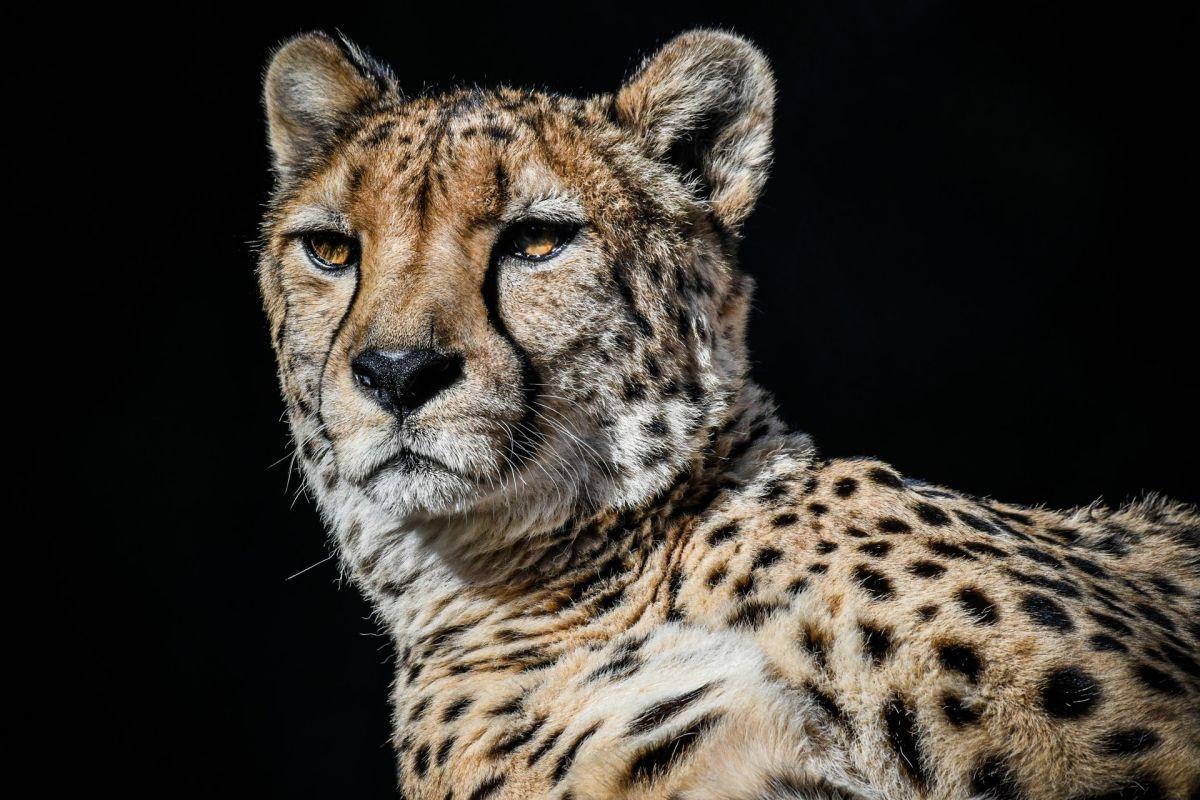
- Name: Arabian leopard
- Scientific name: Panthera pardus nimr
- Conservation status:
The Arabian leopard is definitely the most iconic animal from Yemen, being the country’s national animal. Sadly, it is on the verge of extinction, with as few as 200 wild individuals remaining, and only about 60 in captivity. The populations of this big cat (although it is the smallest leopard subspecies) are seriously fragmented and on a continuous decline.
Formerly, this leopard could be found all around the mountainous regions of Yemen, but after overhunting, depletion of prey, and persecution, it has drastically declined.
2. Socotra buzzard
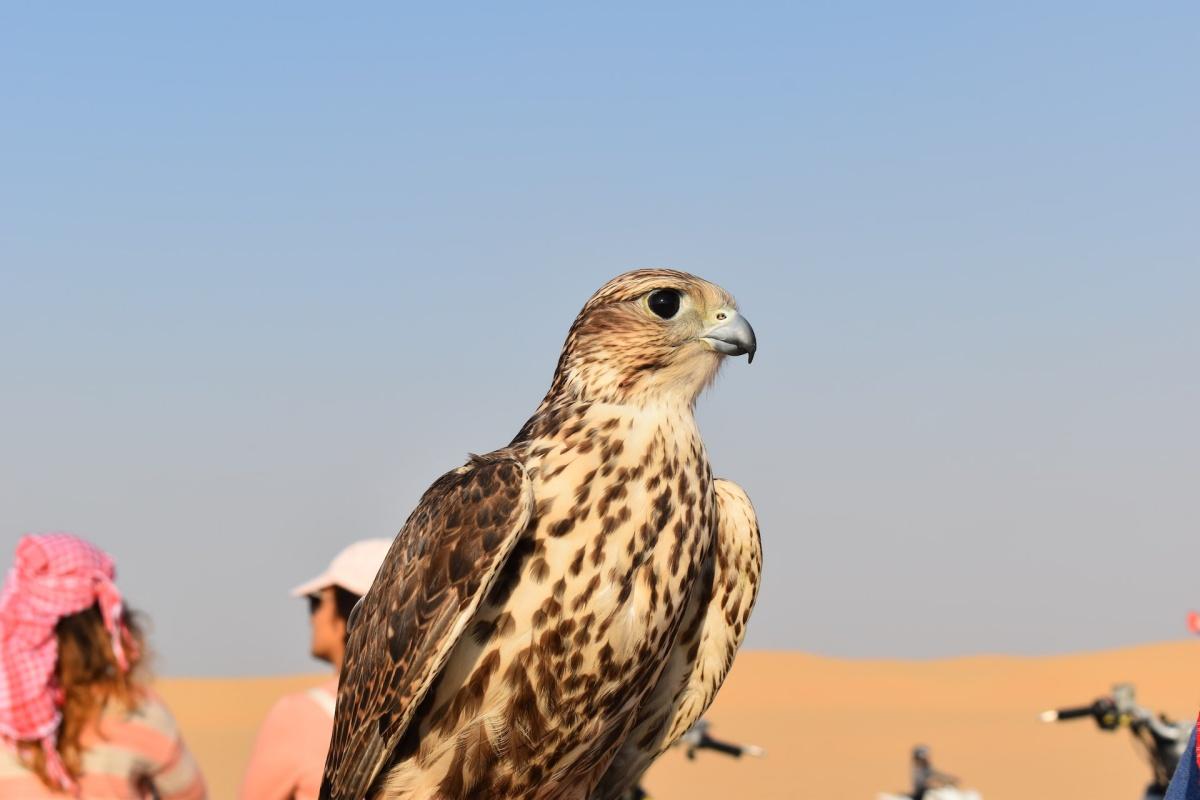
- Name: Socotra buzzard
- Scientific name: Buteo socotraensis
- Conservation status:
There are quite a few animals endemic to Yemen, and the Socotra buzzard is one of them. It is a medium-sized bird of prey found on the island of Socotra, which belongs to Yemen. Although considered vulnerable to extinction, its population is relatively stable.
This buzzard can be found at altitudes between 150 and 800 m / 500 to 2,600 ft, usually in the plateaus and foothills of the island.
3. Hamadryas baboon
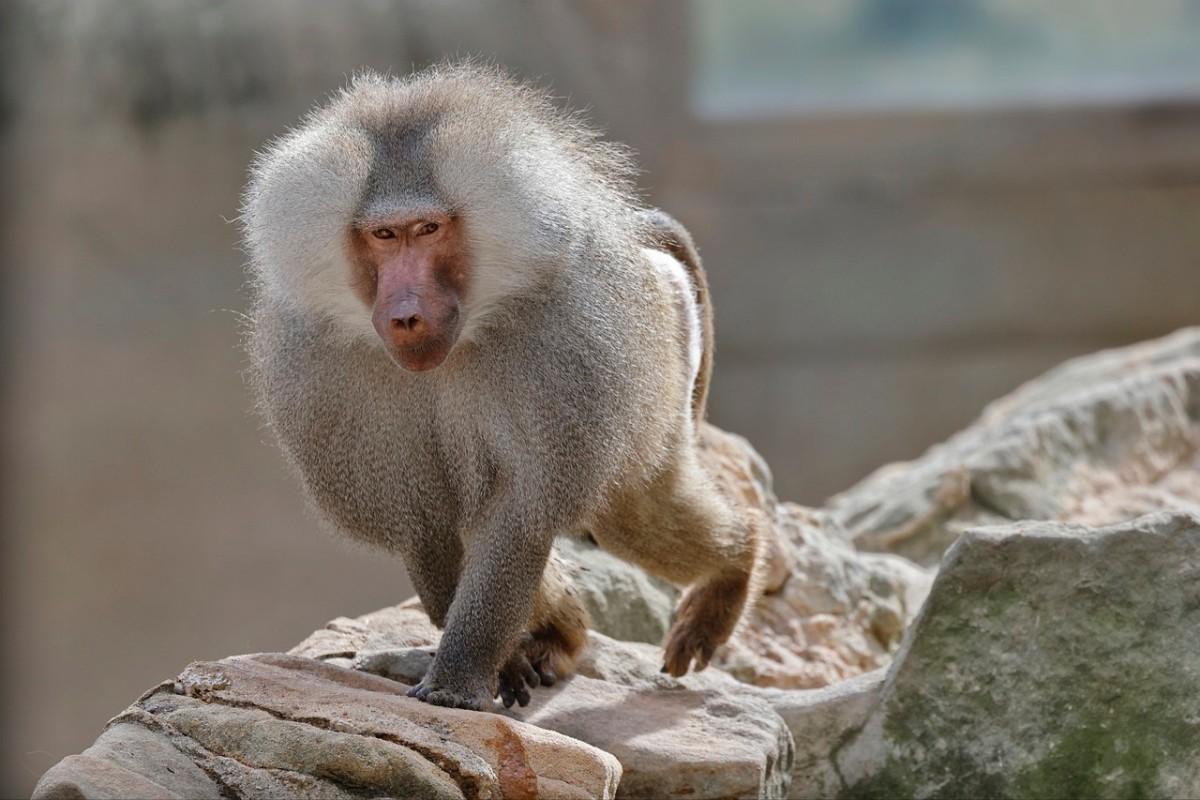
- Name: Hamadryas baboon
- Scientific name: Papio hamadryas
- Conservation status:
The hamadryas baboon is a species of Old World monkey native to northeastern Africa and the Arabian Peninsula. It can be found in several parts of Yemen, where it is abundant due to the lack of natural predators.
Also known as the sacred baboon, this monkey played a prominent role in ancient Egyptian religion. When it comes to feeding, it eats blossoms, roots, bark, leaves, grasses, and seeds, but also spiders, insects, scorpions, and even small mammals such as young antelopes.
4. Mountain gazelle
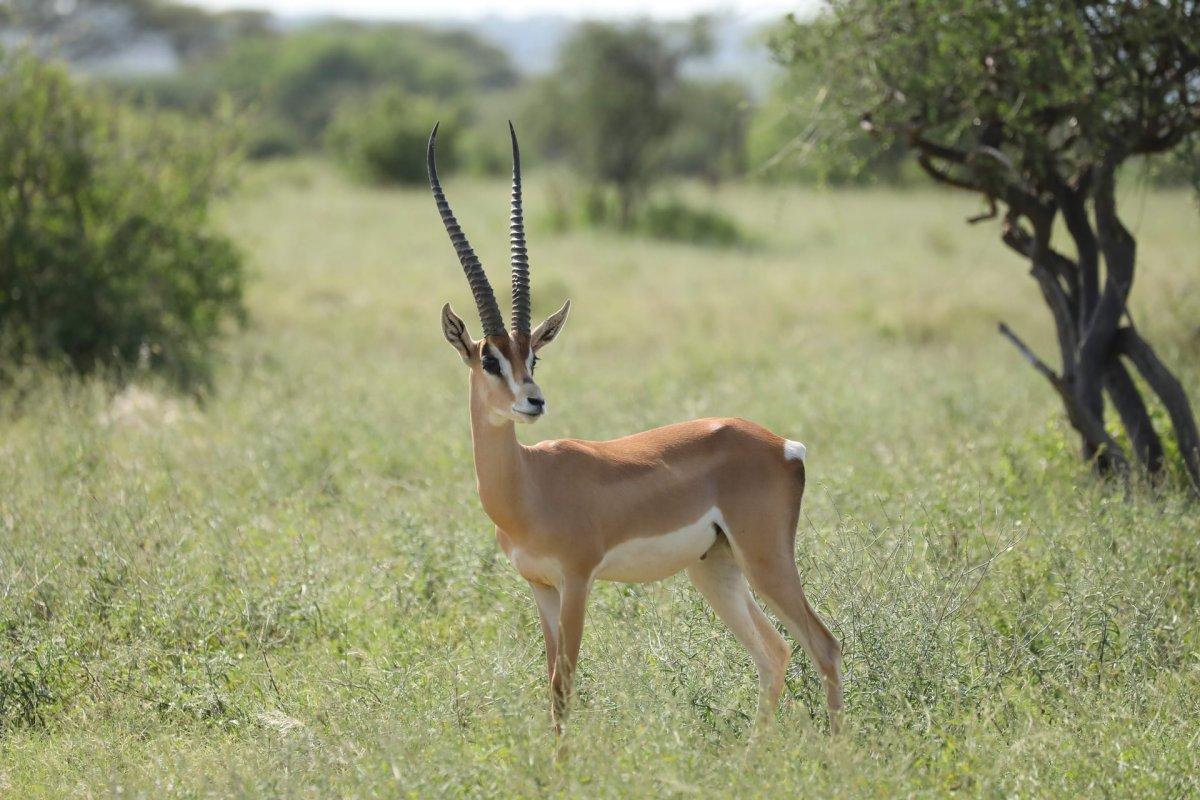
- Name: Mountain gazelle
- Scientific name: Gazella gazella
- Conservation status:
The mountain gazelle, also known as the Israeli mountain gazelle, is a species of gazelle native to the Middle East and the Arabian Peninsula. Although its range is fairly wide, it is unevenly distributed and is thus considered endangered (alongside other factors such as predation, poaching, and habitat fragmentation and loss).
This gazelle is active by day and lives in herds, with which it is particularly territorial.
5. Arabian cobra
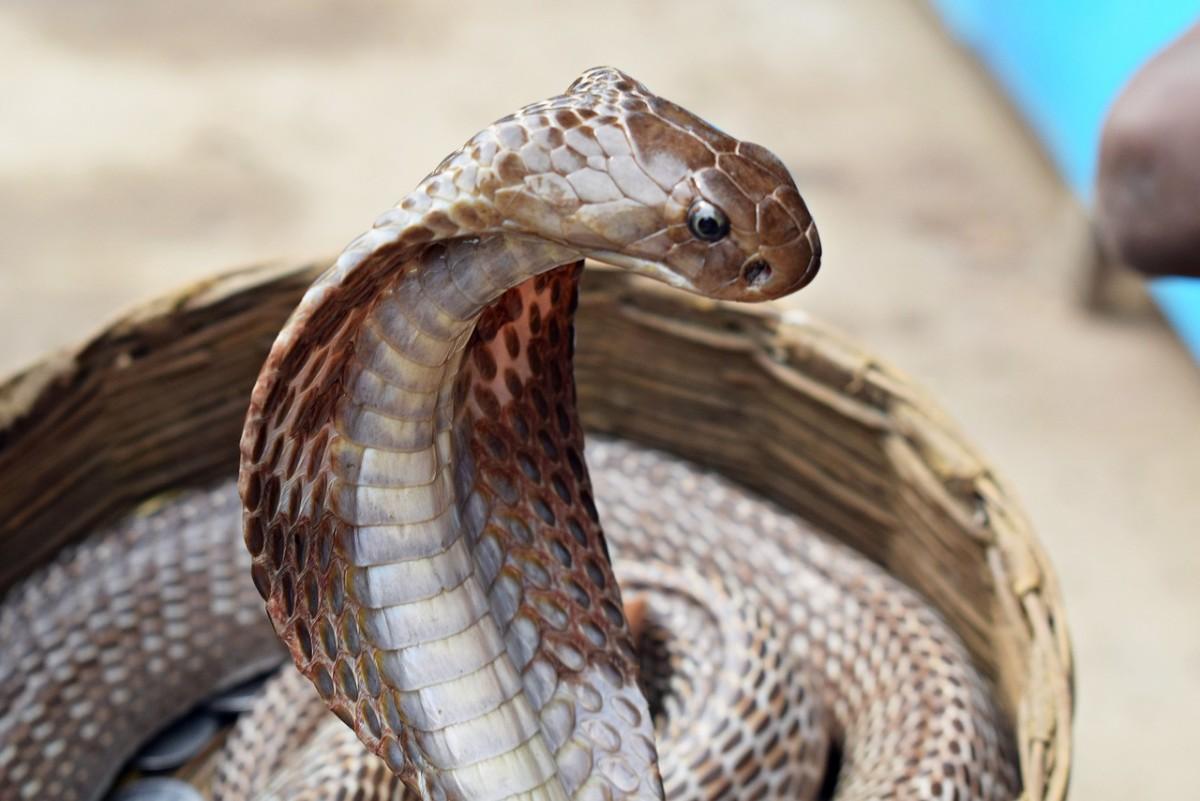
- Name: Arabian cobra
- Scientific name: Naja arabica
- Conservation status:
The Arabian cobra is a venomous snake endemic to the Arabian Peninsula, as its name suggests. It can be found in the southern and western parts of the region, which includes all of Yemen, western Oman, and southern and western Saudi Arabia.
Interestingly enough, this cobra was the 12,000th animal photographed for “The Photo Ark”, a project by National Geographic which consists of photographing every single species around the globe.
6. Griffon vulture
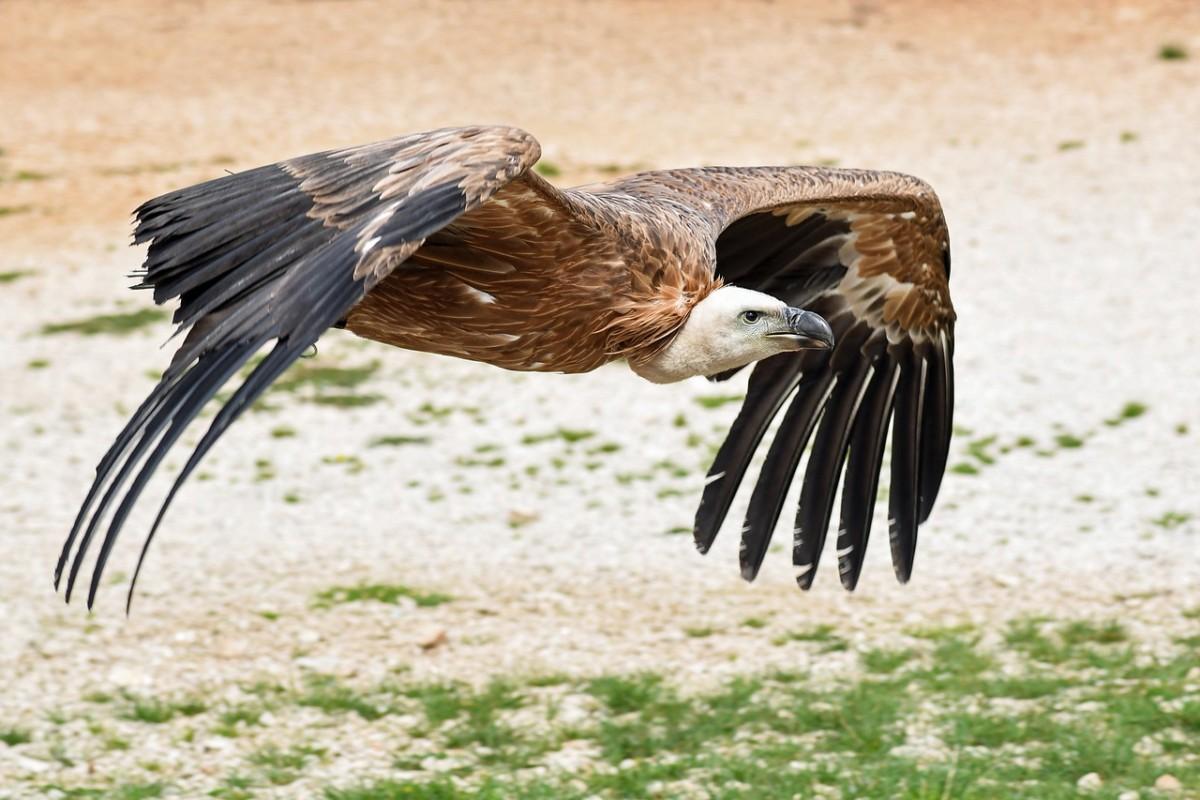
- Name: Griffon vulture
- Scientific name: Gyps fulvus
- Conservation status:
The griffon vulture, also known as the Eurasian griffon, is a large species of Old World vulture native to southern and southwestern Europe, the Middle East, northeastern Africa, and western Asia. It nests on the cliff faces of the western highlands of Yemen, alongside the Barbary falcon and the Verreaux’s eagle.
Just like other vultures, the griffon vulture is a scavenger that relies on carrion to subsist.
7. Verreaux’s eagle
- Name: Verreaux’s eagle
- Scientific name: Aquila verreauxii
- Conservation status:
Speaking of which, the Verreaux’s eagle, also known as the black eagle, is a large species of bird of prey native to several scattered areas across sub-Saharan Africa, as well as some in the Arabian Peninsula, including western Yemen.
This species is one of the most specialized eagles in the world, feeding almost exclusively on rock hyraxes. Aside from that, when hyraxes populations decline, it also attacks small antelopes, monkeys, and hares.
8. Rock hyrax
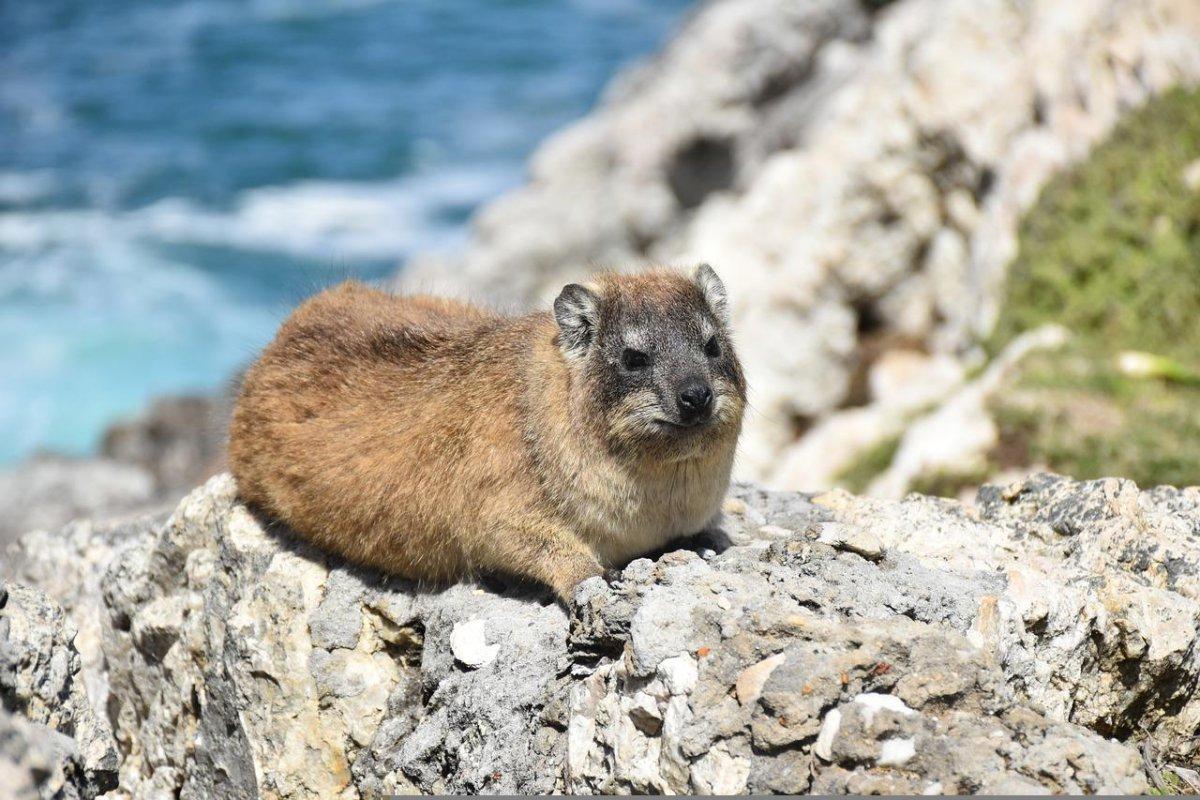
- Name: Rock hyrax
- Scientific name: Procavia capensis
- Conservation status:
The rock hyrax, also known as the Cape hyrax, the rock rabbit, or the dassie, is a medium-sized species of mammal native to the Middle East and Africa. It can be found at elevations of up to 4,200 m / 13,800 ft above sea level, where it inhabits rock crevices, ideal to escape predators such as the Verreaux’s eagle.
This mammal feeds on a wide variety of plants, as well as grubs and insects.
9. Striped hyena
- Name: Striped hyena
- Scientific name: Hyaena hyaena
- Conservation status:
The striped hyena is a species of hyena native to northern and eastern Africa, the Arabian Peninsula, the Middle East, Central Asia, and the Indian subcontinent. As its name implies, it has stripes all over its body, and it is primarily a scavenger.
This hyena is globally on the decline, and fewer than 10,000 mature individuals remain, which are expected to decline by at least 10 percent over the next 3 generations. It can be found all around Yemen.
10. Veiled chameleon
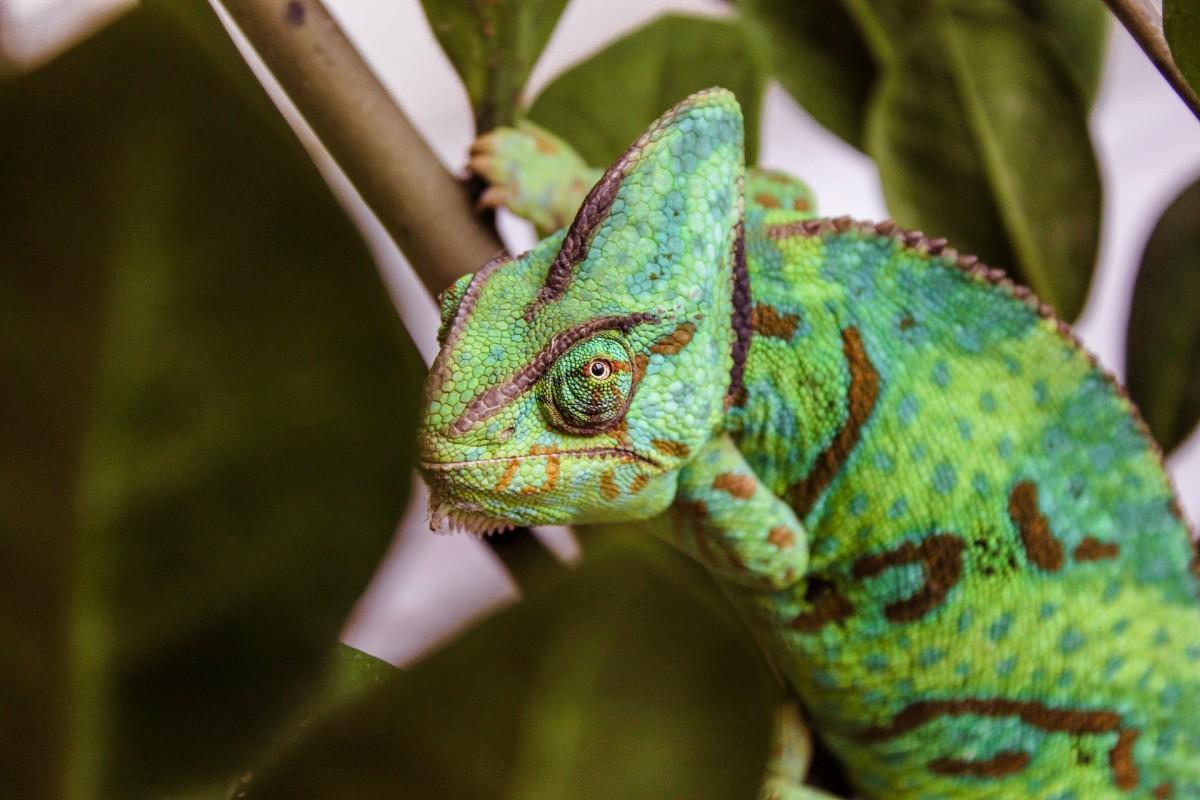
- Name: Veiled chameleon
- Scientific name: Chamaeleo calyptratus
- Conservation status:
The veiled chameleon, also known as the Yemen chameleon or the cone-head chameleon, is a species of chameleon native to a small area shared by western Yemen and southwestern Saudi Arabia.
It has a casque on its head, and although born pastel green, it develops more colors and stripes throughout its life. It is insectivorous, and feeds on dragonflies, flies, and moths, although some specimens are known to eat plant matter.
11. African helmeted turtle
- Name: African helmeted turtle
- Scientific name: Pelomedusa subrufa
- Conservation status:
The African helmeted turtle, also known as the African side-necked turtle, the crocodile turtle, or the marsh terrapin, is a species of tortoise native to sub-Saharan Africa and southern Yemen. It is omnivorous, and can and will feed on anything, including carrion.
This turtle is semi-aquatic and lives in lakes, marshes, rivers, and rain pools. Funnily enough, it is known to bury itself into the ground during very arid weather, and stay in that state for months, and even years.
12. Yemen monitor
- Name: Yemen monitor
- Scientific name: Varanus yemenensis
- Conservation status:
The Yemen monitor is a species of monitor lizard native to Yemen and southwestern Saudi Arabia. It primarily inhabits the Tihama (the southwestern coast of the Arabian Peninsula) and the foothills of mountain ranges.
This lizard can grow up to 110 cm / 3.6 ft long and is dark brown and striped with lines. Usually, it stays close to shallow water or dry river beds and can reduce or even suspend its activity during the driest season of the year, from January to March.
13. Blanford’s fox
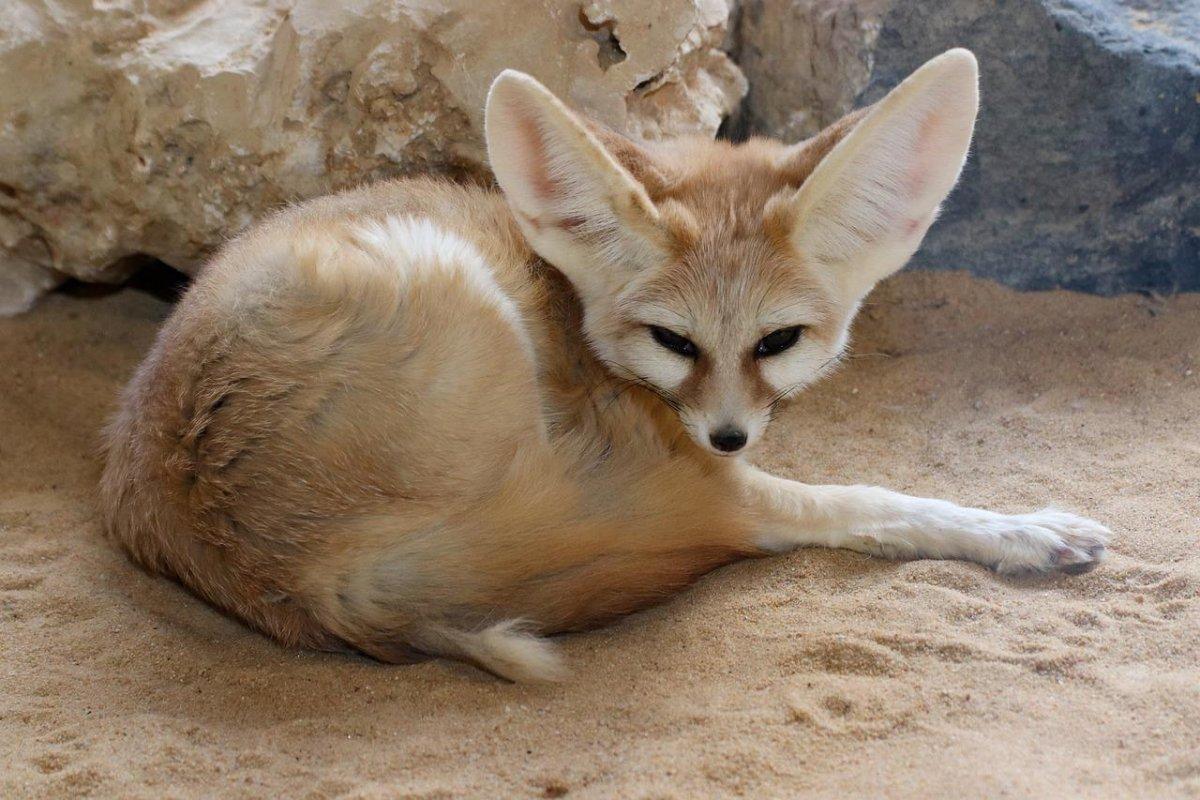
- Name: Blanford’s fox
- Scientific name: Vulpes cana
- Conservation status:
Blanford’s fox is a small species of fox native to western Asia and the Arabian Peninsula. Its range is discontinuous, as it was first discovered in southwestern Asia, but more and more often around the Arabian Peninsula as well.
When it comes to feeding, Blanford’s fox eats insects and fruits, generally speaking. First thought to be endangered, it has been downgraded to least concern after learning more about it and its possible numbers and distribution.
—
So there you have them, these were my 13 wild animals in Yemen. I hope you enjoyed this list and that you learned something new today.
In case you want to learn more about Yemen wildlife, feel free to keep reading, as I still have lots of things to tell you about:
Endangered Animals of Yemen
This is definitely the saddest part of the list, but it is very important to raise awareness. Because of this, let’s go through the list of endangered animals in Yemen.
Here are the animals in danger of extinction in Yemen.
- Saudi gazelle
- Queen of Sheba’s gazelle
- Sand tiger shark
- Great hammerhead
- Red Sea torpedo
- Whitespotted wedgefish
- Hawksbill turtle
- and 10 more…
- Indian Ocean humpback dolphin
- Giant manta ray
- Whale shark
- Northern bald ibis
- African spurred tortoise
- and 34 more…
To see the full list of endangered species in Yemen, head over to the International Union for Conservation of Nature’s Red List.
What is the National Animal of Yemen?
The national animal of Yemen is the Arabian leopard.
There are several reasons for the Arabian leopard to embody Yemen’s spirit and traditions.
First of all, it is endemic to the Arabian Peninsula, as its name suggests, which makes it a national pride.
Then, it is on the brink of extinction and raises critical concern for Yemen’s government. After being overhunted in Yemen, fewer than 200 specimens remain in the wild.
Finally, it is simply a beautiful, powerful and free animal that represents might and forces respect.
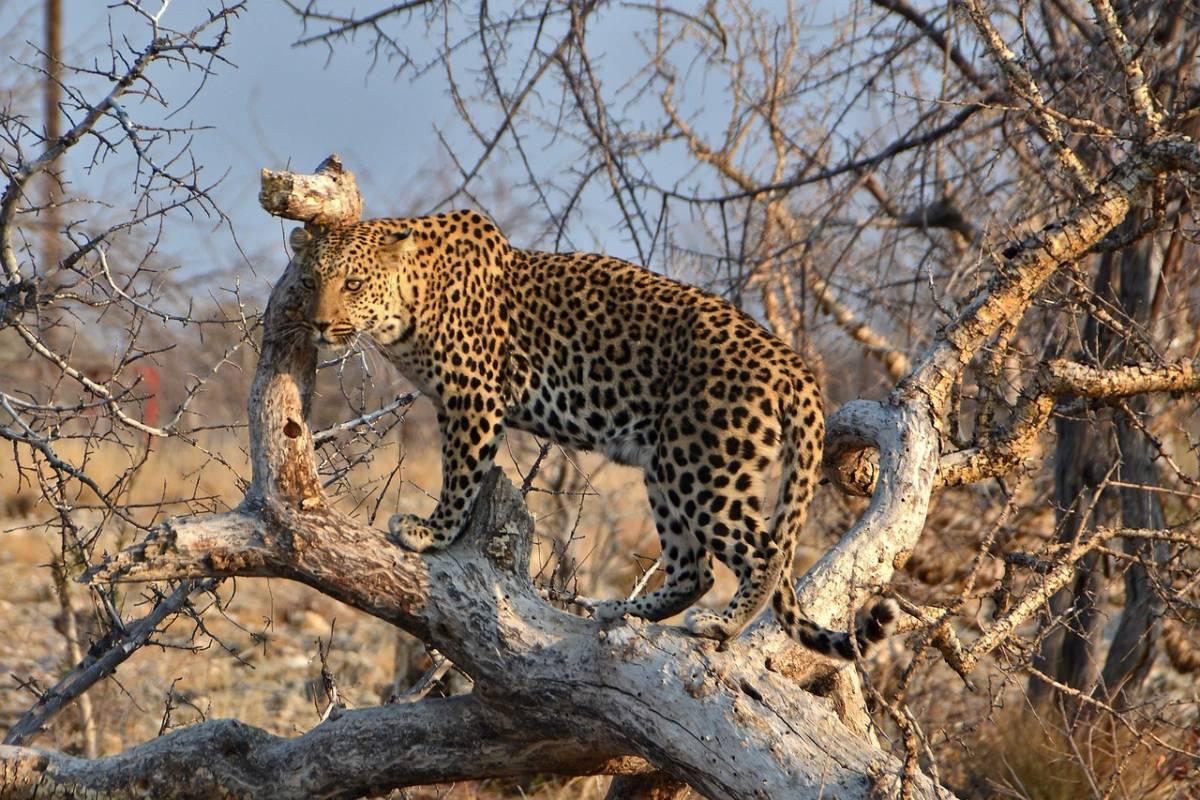
How Many Animals Native to Yemen?
What is the diversity of native animals in Yemen?
Let’s look at the total number of species of Chordata (mammals, birds, fishes, and reptiles).
Total number of animal species in Yemen: 1977
More About Animals in the World!
Loved these Yemen animal facts? Want to see what animals live in other countries?
Then check out these posts:
Or click here to see ALL the facts up on the blog! Spoiler alert: there’s A LOT of them.
Share the knowledge! Click on the buttons below to share information about these famous animals in Yemen with your friends, and help them learn more about the world 🙂
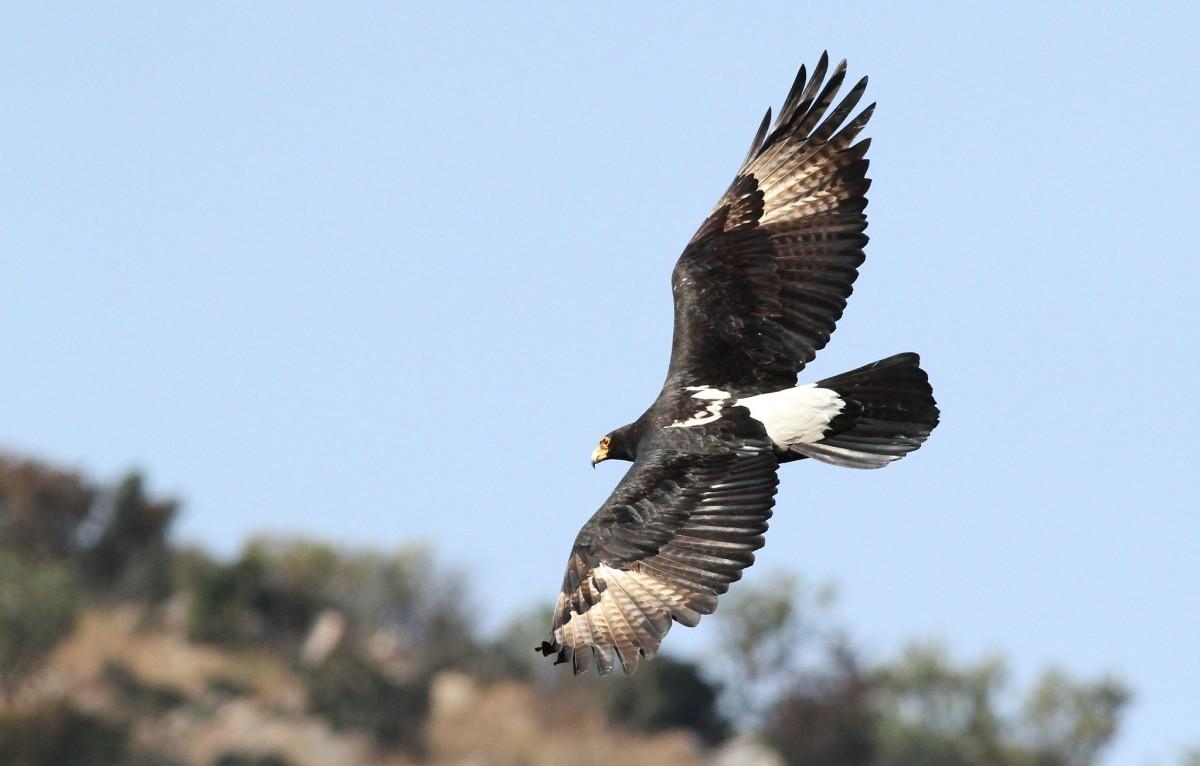
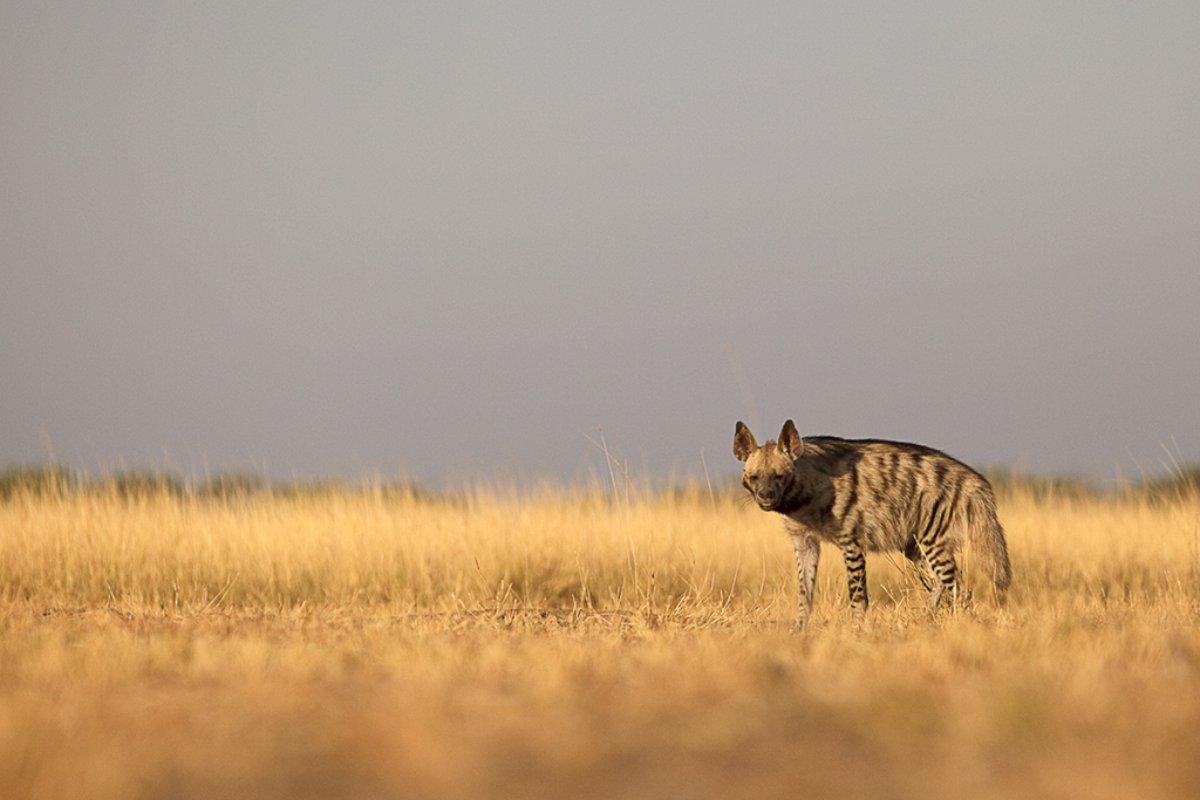
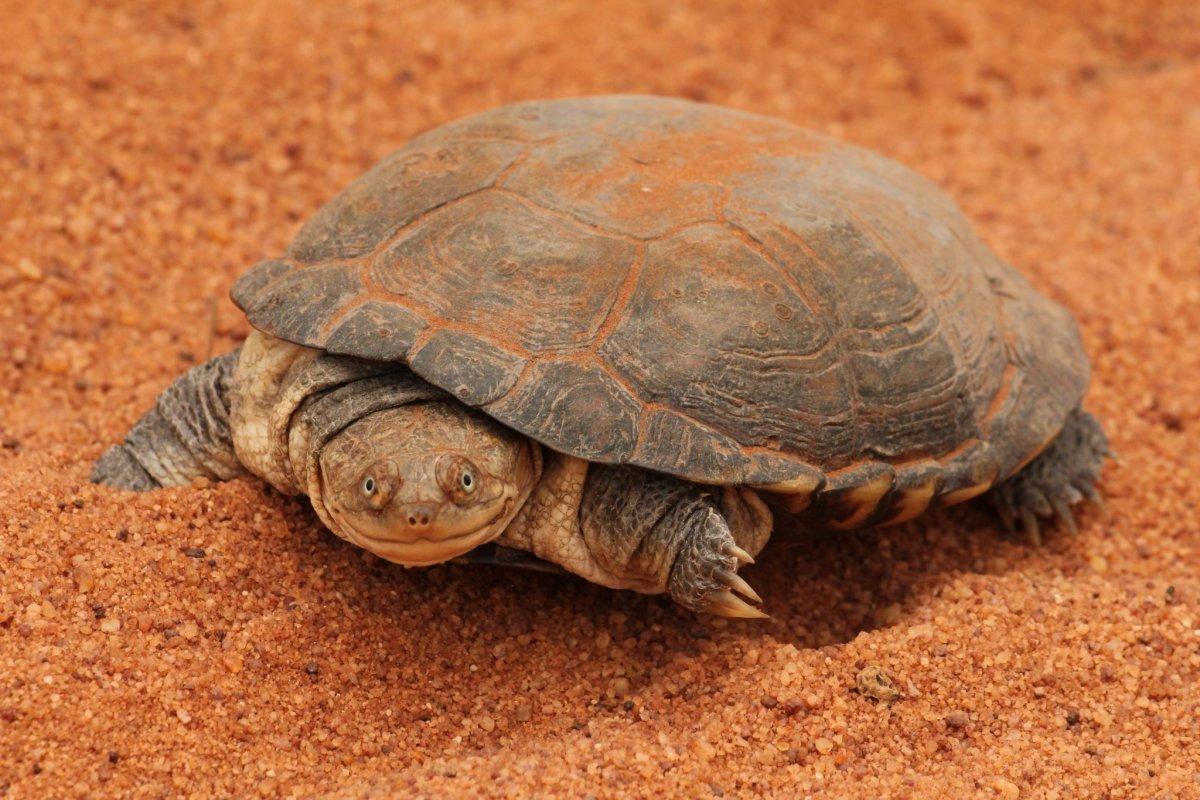

![10 Wild Animals in Antigua And Barbuda [Wildlife in Antigua And Barbuda]](https://www.kevmrc.com/wp-content/uploads/2022/08/10-wild-animals-in-antigua-and-barbuda.jpg)
![13 Wild Animals in Victoria [Wildlife in Victoria]](https://www.kevmrc.com/wp-content/uploads/2023/01/13-wild-animals-in-victoria-australia.jpg)
![15 Wild Animals in Angola [Wildlife in Angola]](https://www.kevmrc.com/wp-content/uploads/2022/11/15-wild-animals-in-angola.jpg)